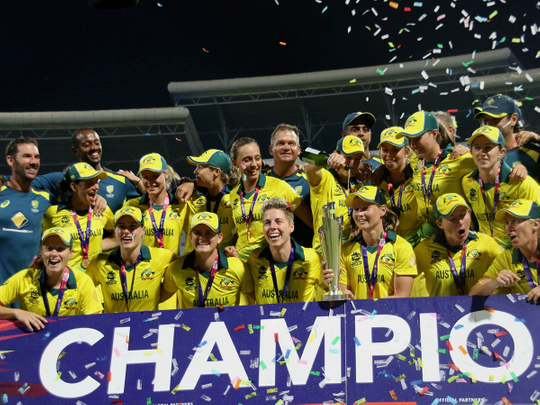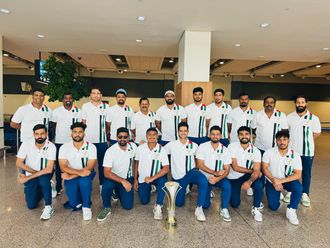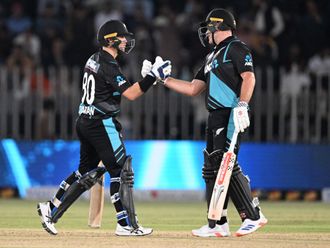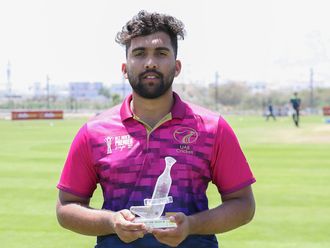
Antigua: It wasn’t the type of image that we are conditioned to seeing: Meg Lanning, legs splayed around the midriff of Ashleigh Gardner as the World T20 winning runs were struck.
The Australian captain’s comparative advantage across her celebrated career to date has been control, be it at the crease or behind the mic, underpinned by her peerless powers of concentration. Yet here she was, instinctively giving herself over to the moment, completely and entirely.
And why wouldn’t she? Sure, Lanning has been part of many successful Australian teams and is in the middle of a career that will most than likely end up the most productive in the history of the women’s game. But this was a triumph that stretched well beyond putting together a couple of clinical weeks of tournament cricket. That is why it was, she acknowledges, the best moment of her cricket life.
“I have to say yes,” she agreed when asked if this topped all else. “It’s definitely the most satisfying win I’ve been involved in, especially after the last couple of years. The last couple of World Cup exits for us hurt our team a lot.”
As a reference point, that semi-final loss in last year’s World Cup has been a permanent feature of the conversation around how this side is so vastly improved, above the shoulders most of all. “We spoke about that as a group and not hiding away from that fact,” she continued. “The biggest thing has been that we’ve been able to learn and really grow.”
Back then, Lanning was batting with one arm all-out falling off, her right shoulder so badly injured that it required surgery that kept her out of last summer entirely. “It’s had a massive impact on the way I look at the game,” she said of that enforced layoff. “That timeout for me was extremely difficult; harder than I thought it was going to be.”
A major benefit of making a conscious decision to foster a dressing room where aggressive cricket is supported without exception means the days of depending on the skipper alone are over. “Now with our batting line-up that we’ve got I can play a lot more freely,” she explained. “I can just go out there and play rather than feel like I’ve got a lot of responsibility. Over the last year or so we’re not relying on one or two players anymore, and I think that probably found us out a little bit in World Cups.”
The best example of this is Alyssa Healy, the world-beating opener who added the player of the series trophy to four best-on-ground awards from the group stage. “She’s put in a lot of hard work over the last year or so to get herself into a really good shape and really good spot mentally,” Lanning said. “The biggest thing was I just saw a smile on her face all the time and that’s what we speak about as a group. She led the charge.”
This win was also a validation of bold selection, namely Georgia Wareham. At age 19 and barely one Women’s Big Bash League season under her belt, the 19-year-old from Koroit in south-west Victoria was given the nod ahead of supremely talented Amanda Wellington. In the final, two wickets and a vital run out made her as valuable as any Australian.
Speaking of the WBBL, it is where all roads lead back. A deeper pool of talent is one obvious flow-on effect (look no further than player of the final Gardner, who made her name slaying attacks in the competition) but the fact that it is televised means that newcomers have already been exposed to higher levels of scrutiny and pressure.
“To have those young players step up in such a big final just shows how good they can be and really how calm and composed they are under pressure,” Lanning said of the semi-professional showcase of the best talent in the world, soon into season four. “Cricket Australia has supported us wonderfully well over the last five years not just the last bit.”
Taking a step back, there’s was an understanding that at the end of a year from hell for Australian cricket, that they had a chance in this World T20 to tell a very different story from sandpaper and cultural reviews and the rest. “We’ve spoken about that as a group making sure that we’re carrying ourselves really well,” Lanning said. “There was a lot of people watching back home and hopefully we’ve been able to make them proud.” Without a doubt, they have.












